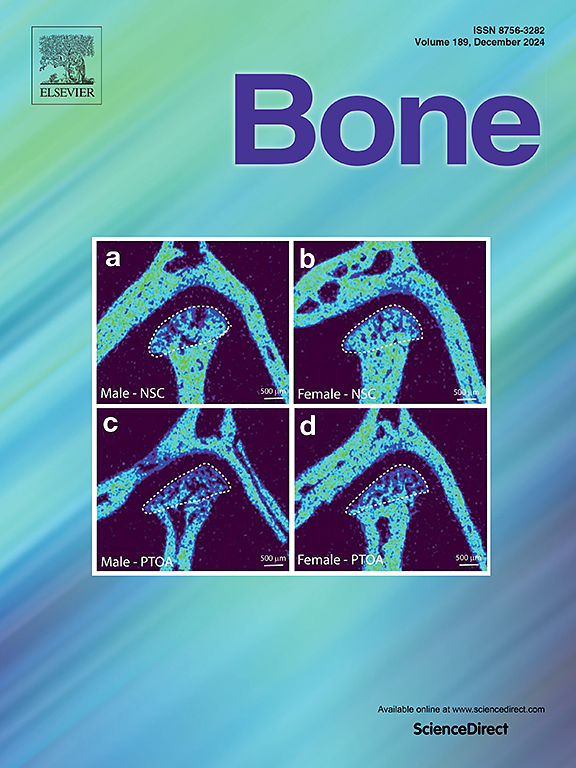Dental and craniofacial manifestations in sponastrime dysplasia - An observational study
IF 3.6
2区 医学
Q2 ENDOCRINOLOGY & METABOLISM
引用次数: 0
Abstract
Sponastrime dysplasia is an extremely rare autosomal recessive spondyloepimetaphyseal dysplasia characterized by short stature, midface hypoplasia, nasal alterations, and dental anomalies. This is, to date, the first comprehensive report on oral and craniofacial findings, and on subjective oral health-related quality of life as clinically and radiologically examined in two adults with sponastrime dysplasia.
Both subjects had typical features of sponastrime dysplasia with disproportionate short stature, hypertelorism and midface hypoplasia, and variants in the TONSL gene. One had a severe phenotype (adult height 91 cm), whereas the other exhibited moderate severity (adult height 135 cm). The notable variation in the disorder severity was also expressed in dental manifestations. Dentin dysplasia type I-like abnormalities were seen in tooth eruption and morphology. Dental roots were shortened in both individuals. The individual with severe growth failure had lost several permanent teeth and reported a moderate level of discomfort and impairment due to oral health issues, as evaluated with the Oral Health Impact Profile questionnaire. In contrast, the other individual had a full permanent dentition and minimal negative impact on oral health-related quality of life. Both had short jaw lengths and face height. The anteroposterior jaw relationships were normal. The jaws of the individual with a severe phenotype were retrognathic in relation to the skull base. Both had prominent forehead.
Due to significant craniofacial and dental involvement, individuals with sponastrime dysplasia should be regularly followed by a multidisciplinary medical team including a dentist, to maintain individuals' oral health and oral health-related quality of life.
海绵发育不良的牙齿和颅面表现-一项观察性研究
Sponastrime dysplasia是一种非常罕见的常染色体隐性的脊柱干骺端发育不良,其特征是身材矮小、脸中部发育不全、鼻腔改变和牙齿异常。这是迄今为止第一份关于口腔和颅面发现以及主观口腔健康相关生活质量的综合报告,该报告通过临床和放射学检查了两名患有先天性发育不良的成年人。两名受试者均具有典型的脊柱发育不良特征,包括不成比例的身材矮小、远视和中脸发育不全,以及TONSL基因变异。一种表型严重(成人身高91 cm),另一种表型中度(成人身高135 cm)。牙病严重程度的显著差异也表现在牙齿表现上。牙本质发育不良在牙萌和形态上表现为i型异常。两个人的牙根都缩短了。根据口腔健康影响调查问卷的评估,患有严重生长衰竭的个体已经失去了几颗恒牙,并且由于口腔健康问题报告了中等程度的不适和损伤。相比之下,另一个人有完整的恒牙,对口腔健康相关生活质量的负面影响最小。他们的下巴和脸都很短。前后颌关系正常。具有严重表型的个体的颌骨相对于颅底是后颌骨。两人的前额都很突出。由于严重的颅面和牙齿受损伤,患有海绵发育不良的个体应定期接受包括牙医在内的多学科医疗团队的随访,以维持个体的口腔健康和口腔健康相关的生活质量。
本文章由计算机程序翻译,如有差异,请以英文原文为准。
求助全文
约1分钟内获得全文
求助全文
来源期刊

Bone
医学-内分泌学与代谢
CiteScore
8.90
自引率
4.90%
发文量
264
审稿时长
30 days
期刊介绍:
BONE is an interdisciplinary forum for the rapid publication of original articles and reviews on basic, translational, and clinical aspects of bone and mineral metabolism. The Journal also encourages submissions related to interactions of bone with other organ systems, including cartilage, endocrine, muscle, fat, neural, vascular, gastrointestinal, hematopoietic, and immune systems. Particular attention is placed on the application of experimental studies to clinical practice.
 求助内容:
求助内容: 应助结果提醒方式:
应助结果提醒方式:


